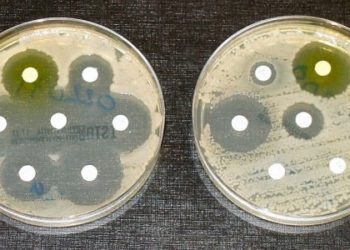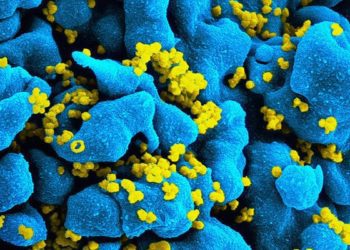Four different types of breast cancer revealed based on molecular data
Image: CC
Key study points:
Primer: Breast cancer is genetically and phenotypically heterogeneous. In the clinic, it is typically categorized into three groups based on therapeutic options: hormone (estrogen or progesterone) receptor positive (ER+, PR+), HER2 amplified and triple negative (not expressing ER, PR or HER2).
Using mRNA expression data, previous studies have delineated subtypes of breast cancer. For example, the PAM50 model uses expression levels of 50 genes to classify breast cancers into 4 “intrinsic subtypes”: Luminal A, Luminal B (both clinically overlapping with hormone receptor positive tumors), HER2-enriched and Basal-like (clinically overlapping with triple negative tumors).
Luminal A tumors (40% of all breast cancers) carry the best prognosis. Luminal B tumors (20% of all cancers) carry a worse prognosis than luminal A tumors. The luminal subtypes, largely hormone receptor positive, are the best candidates for endocrine therapy. The HER2-enriched subtype (10-15% of all cancers) has been targeted using the monoclonal antibody, trastuzumab (Herceptin), with some success. Basal-like (largely triple negative) tumors (15-20% of all cancers) carry a poor prognosis and are most prevalent in younger women, African-American women, and patients with BRCA1 and BRCA2 mutations. These pose the largest therapeutic challenge.
To date, previous gene expression studies have typically integrated at most mRNA expression and DNA copy number data to classify breast cancer subtypes. This study uses data from six different technology platforms.
More background reading:
This [integrated molecular analysis]: Part of the Cancer Genome Atlas project, the study involved DNA samples from 825 patients. The six platforms used were: mRNA expression microarrays, DNA methylation chips, SNP arrays, miRNA sequencing, whole-exome sequencing and reverse-phase protein arrays (RPPA). 463 patients had data from 5 of the 6 platforms (excluding RPPA) and 384 patients had data from all 6 platforms.
Clustering analyses of the mRNA expression data agreed with the intrinsic subtypes defined in the PAM50 model. Analysis of data from most of the other platforms also correlated well with these four breast cancer subtypes, suggesting that these subtypes do constitute distinct disease entities.
Interestingly, clinically HER2+ cancers did not always fall into the HER2-enriched mRNA subtype. This indicates that there may be two types of HER2+ tumors, which may respond differently to drugs that target HER2.
Another striking finding is that the particularly lethal basal-like (triple negative) cancers have some molecular characteristics of serous ovarian cancers.
In sum: This study adds to our understanding of the genetic heterogeneity of breast cancer by integrating an unprecedented amount of molecular data, from direct sequencing to gene expression, protein levels and even epigenetic modifications.
The study validates the four intrinsic subtypes described in the PAM50 model and illuminates in significant detail the molecular differences between these subtypes. These molecular differences, in turn, may enable more targeted therapies tailored to each breast cancer subtype in the future.
More immediate therapeutic implications are also present. Improved targeting of the appropriate Her2 tumor subtype would circumvent unnecessary treatment of the other subtype with trastuzumab, an expensive and occasionally cardiotoxic drug. The molecular commonalities between basal-cell (triple negative) breast cancer and serous ovarian cancer raise the question of a common cause, and may warrant therapy of such cancers with both routine and emerging ovarian cancer therapy.
While a significant step forward, and the most comprehensive molecular portrait of breast cancer to date, this study will inevitably be supplanted in the future by works integrating data from even more technology platforms.
Click to read the study in Nature
By TJ and MP
© 2012 2minutemedicine.com. All rights reserved. No works may be reproduced without written consent from 2minutemedicine.com. DISCALIMER: Posts are not medical advice and are not intended as such. Please see a healthcare professional if you seek medical advice.




